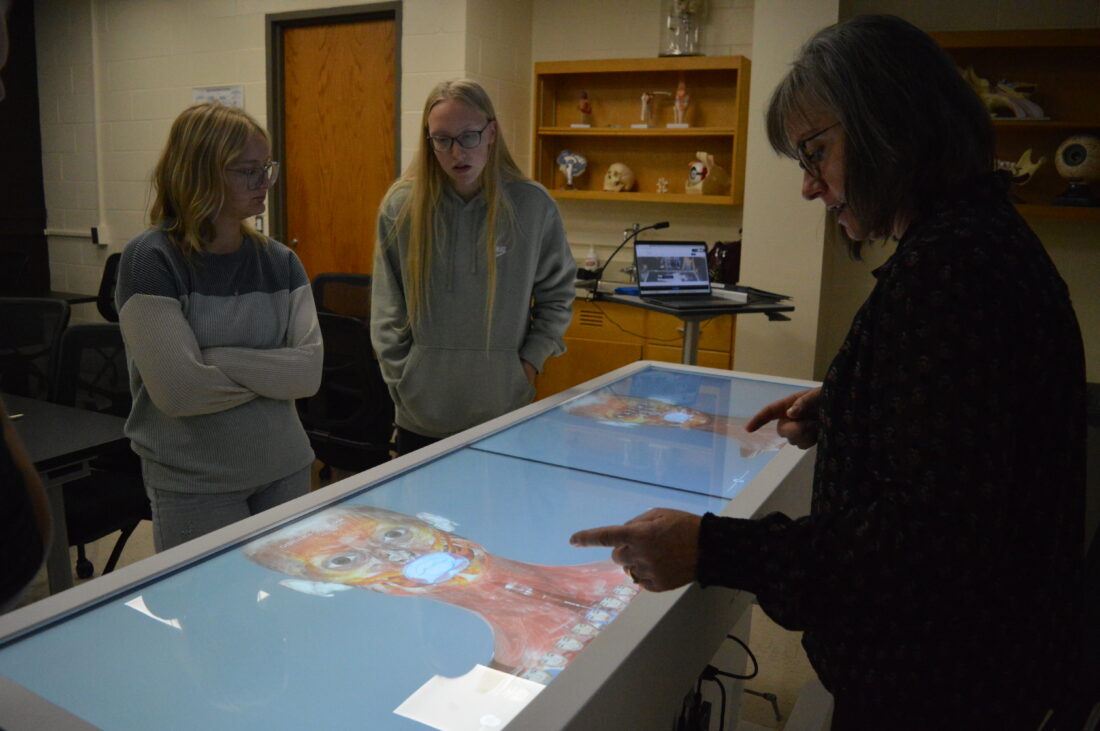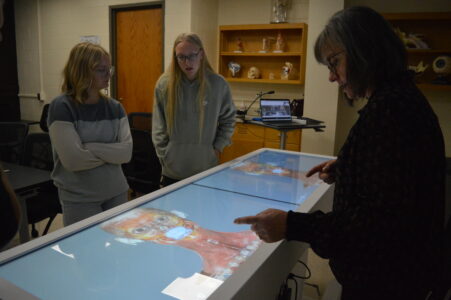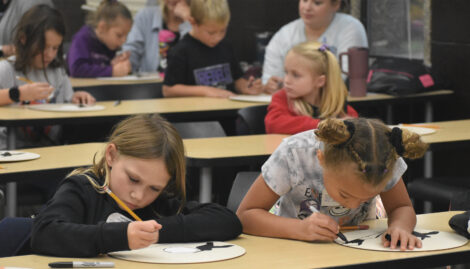A different kind of dissection
SMSU professor demonstrates “virtual cadaver” technology

SMSU students Kaitlin Gleis and Erin Nybakke got a closer look at how the muscles of the human face worked, during a presentation by associate professor Kris Cleveland. The virtual cadaver table at SMSU uses scans of cadavers and computer models to help teach about biology and anatomy.
MARSHALL — It wasn’t a typical anatomy lab. The small group of people gathered around a table at Southwest Minnesota State University were looking at a virtual cadaver – a life-size computerized image of a human body, on a special touch screen.
As Kris Cleveland, associate professor of exercise science, adjusted some sliders on the touch screen, layers of muscles on the cadaver disappeared, revealing different organs and the skeleton.
“Think of it like a big iPad,” Cleveland said of the equipment.
On Thursday, Cleveland gave a demonstration of the Anatomage virtual dissection table at the university. It’s a piece of equipment that SMSU has had for about three years now, she said.
“We wanted people to know that we have this technology here,” Cleveland said of the demonstration. The virtual dissection table had potential to be used for a lot of different educational purposes, she said.
The Anatomage table is about the same size and shape as a laboratory table, but it’s actually a computerized device with two big touch screens on the “tabletop.” Cleveland said the virtual dissection table gets frequent updates with new features, including new images that users can study. Some of the virtual cadavers are based on scans of actual human cadavers. Cleveland showed the audience how they could get a closer look at different muscles, organs and bones on the virtual cadavers, as well as cross-sectional views of the body.
Other features included animated computer models. Cleveland was able to display a computer model of a beating heart, and a model of the muscles in a human face. There were different animations showing how muscles moved to make facial expressions, she said.
Cleveland’s talk drew a mix of people. SMSU students Kaitlin Gleis and Erin Nybakke said they were checking out the presentation for part of the Liberal Education Program (LEP), SMSU’s first-year seminar.
“For LEP, we had to go to different campus events,” Nybakke said.
“We had to go to a speaker,” Gleis said, so they decided to attend the virtual cadaver presentation. “This is really interesting.”
Cleveland said the virtual cadaver table could be used to study animals, as well as people. When audience members had a chance to try the virtual dissection table, Alyssa Anderson, associate professor of biology at SMSU, pulled up some virtual animal cadavers. There were scans of animals ranging from cats and dogs, to a monkey and a shark.
Cleveland said she hoped to encourage more classes and community members to come use the virtual cadaver equipment. The table could be a good learning tool for students in a variety of disciplines, from nursing and exercise science to veterinary science, she said. Additionally, it could be helpful for community members like emergency medical responders or medical professionals, she said.
Cleveland said one way she tries to make the equipment available to the community is by meeting with visiting school groups. As one example, she said, Tracy Area High School students would be taking a field trip to the university as part of learning about anatomy.


